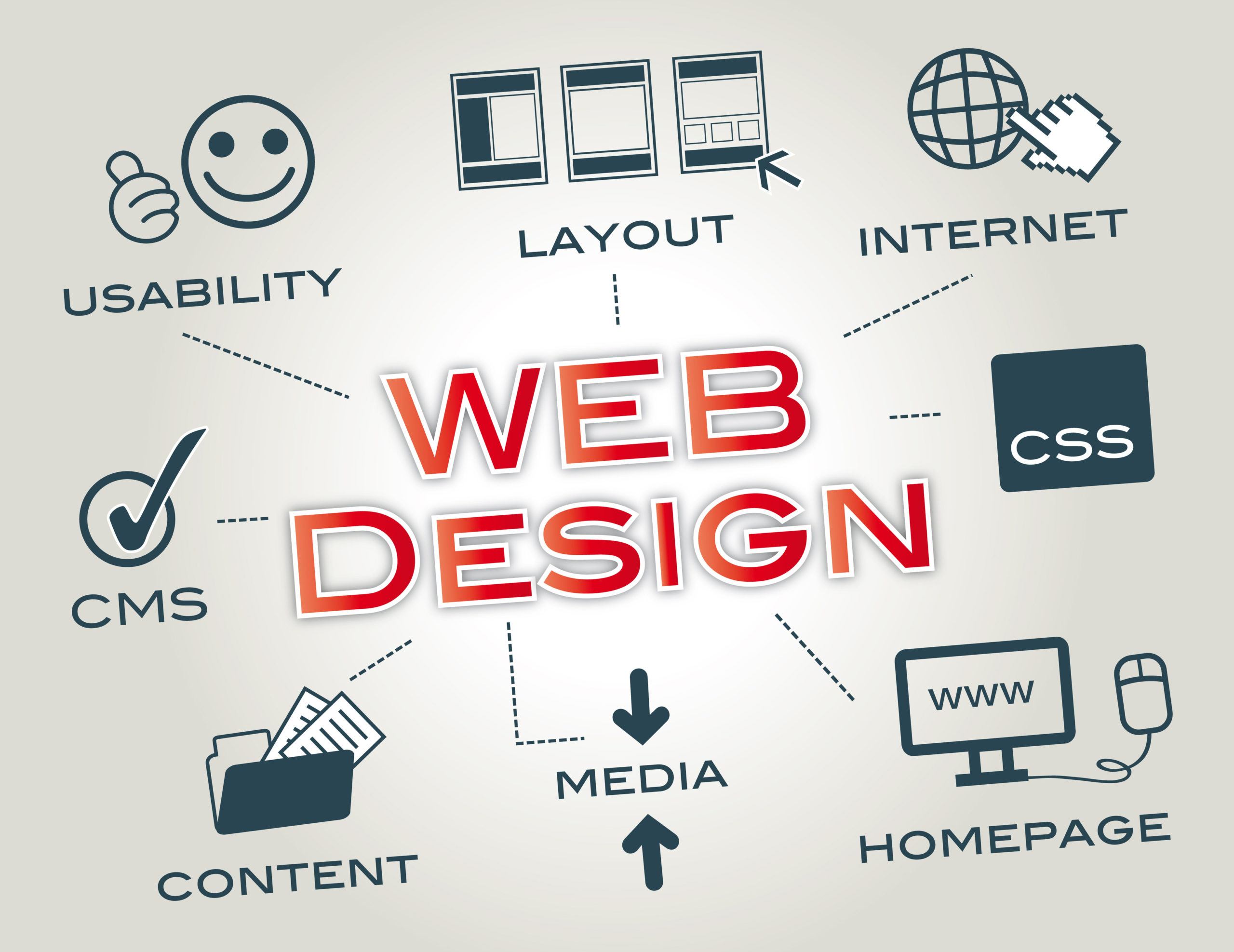The importance of responsive layouts explained by a top web design company
The Significance of User Experience in Effective Web Design Strategies
User experience (UX) serves as a keystone in efficient web design methods. It forms just how customers communicate with a website, influencing their complete satisfaction and possibility of returning. A well-designed UX can boost involvement through intuitive navigating and receptive layouts. Neglecting these facets might lead to stress and raised bounce rates. Recognizing the ins and outs of UX is necessary for designers aiming to develop engaging digital experiences that reverberate with diverse target markets. What variables genuinely drive successful user interaction?
Recognizing User Experience and Its Effect On Design
Although user experience (UX) is commonly viewed as a plain aspect of web design, it basically shapes how customers communicate with a web site. UX incorporates all aspects of the user's interaction, including usability, accessibility, and general satisfaction. A positive UX cultivates interaction, encouraging customers to check out the site and return in the future. Conversely, an adverse experience can bring about frustration, leading to high bounce prices and shed chances for conversion.
Layout elements like navigating, content, and format organization play important functions in shaping this experience. Efficient UX layout prepares for user demands and choices, ensuring that information is aesthetically appealing and conveniently obtainable. Additionally, comprehending user actions via analytics can offer beneficial insights, notifying layout choices that improve usability. Eventually, a complete understanding of UX permits designers to create websites that not only attract individuals yet also advertise significant communications that straighten with organization goals and user expectations.
Secret Principles of Reliable User Experience
Reliable user experience hinges on several essential principles that boost internet site functionality and interaction. Instinctive navigation design, receptive format fundamentals, and the importance of visual hierarchy are important aspects that contribute to a seamless communication between customers and web material. Comprehending these principles permits designers to create more accessible and straightforward digital environments.
User-friendly Navigating Layout
When individuals experience an internet site, instinctive navigation layout serves as a crucial gateway to their total experience. Efficient navigating enables individuals to effortlessly locate the information they seek, enhancing their communication with the site. Key concepts consist of clear labeling, sensible organization, and consistent positioning of navigation elements. Labels ought to be straightforward, enabling users to forecast the material they will find. A well-structured hierarchy assists individuals comprehend the connection in between various sections, directing them via the internet site seamlessly. Furthermore, responsive food selections and conveniently accessible web links contribute to a fluid experience throughout devices. By focusing on user-friendly navigating, designers can substantially reduce user aggravation and rise involvement, eventually fostering a favorable perception of the site and its material.
Responsive Design Fundamentals
A well-structured navigation system naturally brings about the need for a receptive layout, which is vital in today's varied digital landscape. A receptive layout guarantees that websites function effortlessly across different devices, consisting of tablet computers, desktop computers, and smart devices. This flexibility enhances user experience by enabling material to be aesthetically coherent and easily accessible, no matter screen size. Secret concepts of receptive layout consist of fluid grids, versatile pictures, and media queries, which help with perfect watching. In addition, prioritizing touch-friendly components boosts communication on mobile tools. By carrying out a responsive design, designers can suit customers' needs, lessen bounce prices, and boost interaction. Ultimately, a well-executed receptive layout cultivates a positive user experience, urging site visitors to discover the site further.
Visual Power Structure Significance
Aesthetic power structure plays a crucial function in assisting users through a web site, making certain that crucial details captures their interest first. By purposefully utilizing size, color, spacing, and comparison, developers can develop a clear path for individuals to comply with. Larger components commonly attract the eye, showing their relevance, while contrasting shades can highlight phone call to activity. Additionally, consistent placement and grouping of relevant content boost comprehension, making navigating instinctive. Effective use of aesthetic hierarchy not only improves use yet additionally supports the general visual of the site, fostering a favorable user experience. When users can easily recognize one of the most important info, they are much more most likely to involve with the material, resulting in enhanced satisfaction and interaction with the web site.
The Function of Use in Web Design
Usability plays a necessary role in web design, specifically through navigating simplicity and adherence to availability requirements. Reliable navigation enhances user fulfillment by allowing site visitors to find information rapidly and with ease. At the same time, meeting accessibility requirements assures that all individuals, no matter of their capacities, can efficiently connect with the internet site.
Navigation Simplicity
Simplicity in navigation stands as a cornerstone of effective web design, considerably affecting user experience. A streamlined navigation system permits individuals to discover information rapidly and with ease, lowering frustration and enhancing contentment. Clear labeling and rational framework are essential components, directing customers easily via the web site. Repetitive web links or excessively intricate food selections can confuse customers, resulting in increased bounce prices. Additionally, mobile responsiveness has to be thought about, making certain navigating continues to be simple throughout gadgets. Decreasing and prioritizing important pages clutter better supports user involvement. Efficient navigation not just cultivates a positive experience yet also encourages users to explore the site extra extensively, ultimately leading to greater conversion rates. Hereof, navigation simpleness acts as an important consider the total performance of web design methods.
Accessibility Requirements
User interaction is considerably boosted when web sites adhere to availability criteria, guaranteeing that all customers, despite their abilities, can browse and communicate effectively. Conformity with these standards not just expands the audience but additionally boosts overall user satisfaction. Easily accessible layout integrates functions such as message options for images, keyboard navigation, and sufficient shade comparison, which facilitate use by individuals with impairments. Furthermore, executing these standards can positively impact search engine optimization (SEO) by boosting site framework and quality. As web design progresses, focusing on ease of access becomes crucial in fostering a comprehensive digital setting. By embracing these requirements, designers add to a much more equitable net, ultimately driving user commitment my latest blog post and interaction.
Value of Responsive Design for User Engagement
As customers significantly accessibility internet sites with a range of devices, the relevance of receptive style becomes vital for engaging customers successfully. Responsive design warranties that a website adapts perfectly to different screen sizes, offering an ideal watching experience regardless of the device utilized. This adaptability enhances user interaction by assisting in simpler navigation and interaction with content.
When customers run into a site that is responsive, they are most likely to stay longer, discover further, and return in the future. A well-designed responsive design lessens the aggravation usually linked with scrolling and zooming on smaller displays, thereby minimizing bounce prices. Additionally, responsive design can positively affect search engine rankings, as online search engine prioritize mobile-friendly sites. In today's digital landscape, where mobile usage remains to climb, applying responsive style is not just valuable, but important for maintaining user interaction and assuring a positive experience throughout all gadgets.
Enhancing Load Times for Better User Contentment

To improve load times, internet developers ought to prioritize optimizing images, leveraging web browser caching, and lessening HTTP demands. Additionally, employing Web content Shipment Networks (CDNs) can speed up material delivery by dispersing it across different geographical locations. Enhancing code, such as pressing CSS and JavaScript files, even more contributes to much faster filling speeds.
Inevitably, a commitment to boosting load times not find just enhances user satisfaction but additionally reinforces brand name loyalty and boosts the likelihood of repeat visits. A swift, seamless experience is essential for maintaining users and cultivating positive interactions.
The Impact of Visual Hierarchy on User Communication
Visual pecking order acts as a vital aspect in assisting user communication on a website. By arranging content in such a way that prioritizes information aesthetically, developers can influence just how individuals involve and browse with a site. This pecking order is developed with various layout methods, consisting of dimension, comparison, spacing, and color. Bigger fonts or bold shades draw attention to vital aspects, such as calls to activity or headlines, while controlled colors and smaller font styles can indicate subservient info.
Effective aesthetic hierarchy helps individuals swiftly identify what is essential, decreasing cognitive tons and improving use. It enables instinctive navigating, making it less complicated for individuals to find what they require without disappointment. As individuals connect with a site, a well-structured aesthetic power structure fosters a much more enjoyable experience, ultimately leading to higher involvement and conversion rates. Developers must focus on these concepts to produce a efficient and user-centered web setting.
Measuring User Experience: Tools and Techniques

Frequently Asked Concerns
Exactly How Can I Boost My Website's User Experience on a Budget plan?
To boost a website's user experience on a budget plan, one can maximize page load speed, simplify navigating, apply responsive style, improve material quality, and collect user responses for constant refinements, ensuring an enjoyable visitor experience.
What Prevail User Experience Errors to Prevent in Web Design?
Common user experience mistakes in web design consist of messy formats, inadequate navigation, sluggish filling times, absence of mobile responsiveness, disregarding access, irregular branding, and falling short to prioritize user feedback - Web Design services. Each can considerably prevent total site effectiveness
How Typically Should I Update My Site for Better User Experience?
Web sites must be upgraded regularly, ideally every couple of months, to keep suitable user experience. Regular updates aid address functionality problems, freshen content, and adjust to altering user demands, guaranteeing the website remains interesting and pertinent.

Can User Experience Influence Search Engine Optimization Rankings on My Website?
User experience can greatly affect search engine optimization rankings, as online search engine focus on sites that provide smooth navigating, fast filling times, and engaging material. A favorable user experience can bring about lower bounce prices and greater search presence.
What Role Does Ease Of Access Play in User Experience Design?
Availability plays a vital function in user experience layout by guaranteeing that all people, no matter abilities, can navigate and interact with a site efficiently. This inclusivity boosts general complete satisfaction and interaction among varied users.
User experience (UX) is usually regarded as a plain facet of internet style, it basically forms exactly how users interact with a website. User interaction is significantly improved when sites adhere to accessibility criteria, making certain that all individuals, no matter of their capacities, can navigate and interact successfully. Measuring user experience (UX) is necessary for understanding just how properly a site meets the requirements of its individuals. Furthermore, functionality screening, where real users navigate the site while viewers note problems, offers direct feedback on user experience. Common user experience blunders in internet layout include cluttered designs, poor navigation, sluggish packing times, lack of mobile responsiveness, overlooking ease of access, irregular branding, and stopping working to prioritize user feedback.